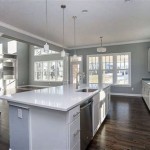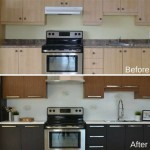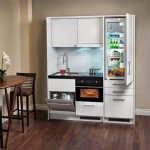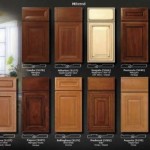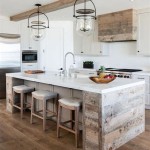Above Kitchen Sink Light Fixtures: A Comprehensive Guide
The area above the kitchen sink often presents a unique lighting challenge. It is a focal point for food preparation, dishwashing, and other essential kitchen tasks. The selection of an appropriate above kitchen sink light fixture is crucial for ensuring adequate illumination, enhancing safety, and contributing to the overall aesthetics of the kitchen space. Various factors influence this selection process, including the size and layout of the kitchen, the style and finish of existing fixtures and cabinetry, the desired level of brightness, and personal preferences.
This article provides a comprehensive overview of above kitchen sink light fixtures, exploring different types, key considerations for selection, installation guidelines, and maintenance tips. It aims to equip homeowners, designers, and contractors with the knowledge necessary to make informed decisions regarding this vital aspect of kitchen lighting.
Types of Above Kitchen Sink Light Fixtures
A diverse range of light fixtures is available for installation above the kitchen sink, each offering distinct advantages and disadvantages depending on the specific application. The most common types include:
Recessed Lighting: Recessed lights, also known as can lights, are installed directly into the ceiling, providing a clean and minimalist aesthetic. These fixtures are particularly well-suited for modern kitchens and spaces with low ceilings. The light is diffused downwards, creating a uniform and shadow-free illumination. Recessed lighting can be strategically positioned to provide task lighting directly over the sink area. However, installation requires access to the ceiling cavity and may necessitate professional assistance. Furthermore, inadequate spacing can lead to shadows or uneven lighting.
Pendant Lighting: Pendant lights are suspended from the ceiling by a chain, rod, or wire. They offer a decorative element in addition to their functional lighting capabilities. Numerous styles, sizes, and materials are available, enabling customization to match the kitchen's design aesthetic. Pendant lights can provide focused lighting over the sink, and their height can be adjusted to control the intensity and spread of light. The use of multiple pendant lights can create a balanced and visually appealing effect. Potential drawbacks include obstruction of views and the need for careful consideration of scale and proportion relative to the sink and surrounding cabinetry.
Track Lighting: Track lighting systems consist of a linear track mounted to the ceiling, onto which multiple light heads are attached. The light heads can be individually adjusted to direct light where it is needed most. Track lighting provides flexibility and versatility, making it suitable for kitchens with multiple work areas or unusual layouts. It can be used to highlight specific features, such as backsplash tiles or decorative elements. The exposed track may not be aesthetically pleasing in all kitchen designs. Careful planning is necessary to ensure the track is properly positioned and the light heads are appropriately spaced.
Under-Cabinet Lighting: While not directly above the sink, under-cabinet lighting significantly contributes to illumination in this area. These fixtures are mounted beneath the upper cabinets, providing focused task lighting on the countertop and sink. Under-cabinet lights eliminate shadows and enhance visibility for food preparation and dishwashing. LED strip lights, linear bar lights, and puck lights are common options. Installation is generally straightforward, and various power options are available, including hardwired and plug-in models. Under-cabinet lighting works best when combined with other overhead lighting sources.
Flush Mount Lighting: Flush mount lights are attached directly to the ceiling, offering a low-profile and unobtrusive lighting solution. They are suitable for kitchens with low ceilings or limited vertical space. Flush mount lights provide ambient lighting, illuminating the entire area around the sink. Numerous styles and finishes are available, ranging from simple and functional to decorative and ornate. The light output may be less focused than other types of fixtures, requiring careful selection of bulb wattage. The installation process is relatively simple, although wiring connections must be handled with care.
Key Considerations for Selecting an Above Kitchen Sink Light Fixture
Selecting the appropriate above kitchen sink light fixture requires careful consideration of several factors to ensure optimal functionality, safety, and aesthetics. These factors include:
Brightness and Light Output: The primary function of a sink light is to provide adequate illumination for tasks such as washing dishes, preparing food, and cleaning. Consider the size of the sink area and the surrounding countertop space when determining the required brightness. Light output is measured in lumens, with higher lumen values indicating brighter light. LED bulbs are a popular choice due to their energy efficiency and long lifespan. Warm white light (2700-3000K) creates a cozy and inviting atmosphere, while cool white light (3500-4100K) provides a brighter and more focused illumination, suitable for task lighting. The Color Rendering Index (CRI) measures how accurately a light source renders colors compared to natural sunlight. A higher CRI (80 or above) is recommended for kitchens to ensure accurate color perception.
Style and Aesthetics: The light fixture should complement the overall design style of the kitchen. Consider the finishes of the cabinets, countertops, and other fixtures when choosing a light fixture. Stainless steel, brushed nickel, and oil-rubbed bronze are common finishes that coordinate well with modern and traditional kitchen designs. The shape and size of the fixture should be proportionate to the sink area and surrounding cabinetry. Simple and understated fixtures are suitable for minimalist kitchens, while more elaborate and decorative fixtures can add a touch of elegance to traditional spaces. The chosen fixture should contribute to the overall visual harmony of the kitchen.
Placement and Spacing: The placement of the light fixture is crucial for ensuring optimal illumination and preventing shadows. The fixture should be positioned directly above the sink to provide focused lighting. Consider the height of the ceiling and the size of the fixture when determining the mounting height. For pendant lights, ensure that the bottom of the fixture is at least 30 inches above the sink to avoid obstructing the view. For recessed lights, space the fixtures evenly to provide uniform illumination. The placement of the light fixture should also take into account the location of windows and other light sources to avoid glare and uneven lighting. Professional consultation may be beneficial for determining the optimal placement and spacing of multiple light fixtures.
Safety and Compliance: Electrical safety is paramount when installing any lighting fixture. Ensure that the light fixture is properly grounded and that all wiring connections are made according to local electrical codes. Ground Fault Circuit Interrupter (GFCI) outlets are required in kitchens to protect against electrical shock. Consider the IP (Ingress Protection) rating of the fixture, particularly if it is located near a water source. A higher IP rating indicates greater protection against moisture and dust. Consult with a qualified electrician to ensure that the installation is safe and compliant with all applicable regulations.
Durability and Maintenance: The light fixture should be made of durable materials that can withstand the humidity and temperature fluctuations common in kitchens. Stainless steel, aluminum, and glass are common materials that are resistant to corrosion and easy to clean. LED bulbs have a long lifespan and require minimal maintenance. Choose a fixture that is easy to clean and maintain to ensure its longevity. Regularly clean the fixture to remove dust and grease, which can reduce its light output.
Installation and Maintenance Guidelines
Proper installation and maintenance are essential for ensuring the safe and effective operation of above kitchen sink light fixtures. Following these guidelines can help prolong the lifespan of the fixture and prevent potential problems:
Professional Installation: While some homeowners may be comfortable with basic electrical work, it is generally recommended to hire a qualified electrician to install light fixtures, particularly if it involves complex wiring or modifications to the electrical system. A professional electrician can ensure that the installation is safe, compliant with local codes, and properly grounded. They can also troubleshoot any potential problems and provide expert advice on placement and wiring configurations. Attempting to install a light fixture without proper knowledge and experience can be dangerous and may result in electrical shock or fire.
Safety Precautions: Before starting any electrical work, always disconnect the power at the circuit breaker. Use a voltage tester to verify that the power is off before touching any wires. Wear rubber gloves and safety glasses to protect yourself from electrical shock and debris. Carefully follow the manufacturer's instructions for installation and wiring. If you are unsure about any aspect of the installation, consult with a qualified electrician.
Wiring Connections: Ensure that all wiring connections are secure and properly insulated. Use wire connectors to join wires of the same gauge and color. Wrap electrical tape around the wire connectors to provide additional insulation. Avoid overtightening screws, which can damage the wires. Double-check all wiring connections before turning on the power.
Bulb Replacement: When replacing light bulbs, always disconnect the power at the circuit breaker. Allow the bulb to cool down before handling it to avoid burns. Use the correct type and wattage of bulb recommended by the manufacturer. Dispose of old bulbs properly according to local regulations. Consider using LED bulbs, which are energy-efficient and have a long lifespan.
Cleaning and Maintenance: Regularly clean the light fixture to remove dust and grease, which can reduce its light output. Use a soft cloth and mild detergent to clean the fixture. Avoid using abrasive cleaners or solvents, which can damage the finish. Inspect the fixture for loose screws or damaged wires. Tighten any loose screws and repair or replace any damaged wires. Keep the area around the fixture free from clutter to prevent accidental damage.

19 Best Kitchen Sink Lighting Ideas Ceiling Lights

Over Kitchen Sink Lighting How To Enlighten Your Cooking Space

12 Lighting Over The Kitchen Sink Ideas Remodel Design New

The 15 Best Over Kitchen Sink Lighting Ideas Lightopia

Install A Sconce Light Above The Kitchen Sink Tylynn M

How To Light Up The Kitchen Sink With Style Inspiration Barn Electric

Kitchen Lighting Ideas The Home

Kitchen Light Fixtures Above Sink

Rustic Farmhouse Light For Country Decor Wooden Beam Ceiling Fixture Kitchen Strip Replacement With Hanging Pendant Lights Etsy

Over Sink Hot Sale Light Fixture Kitchen

